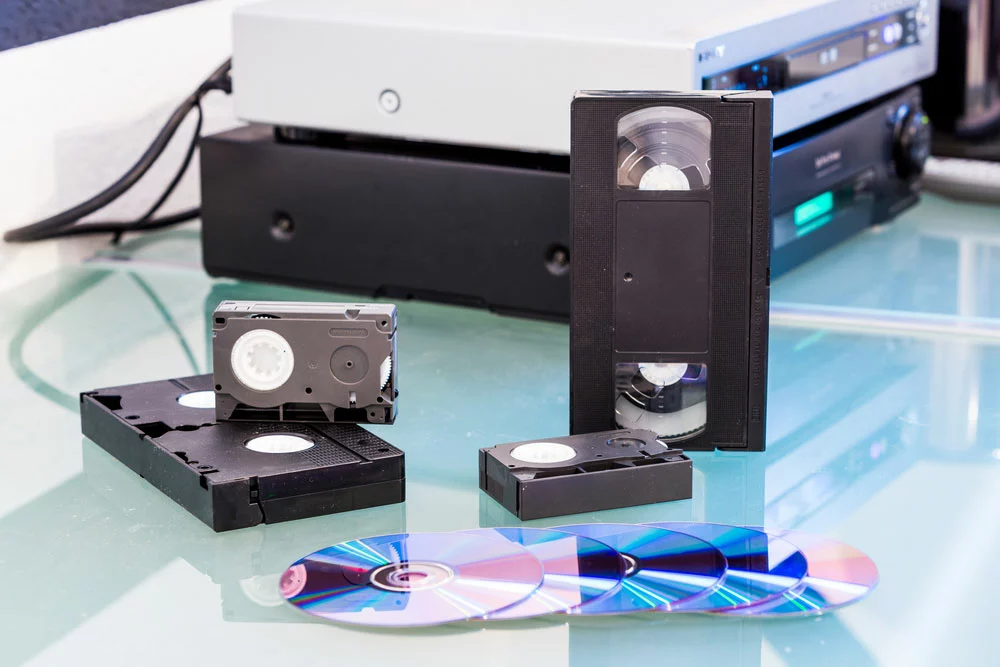The consumer electronics and technology industry employs different cables and connectors for audio transmission between components. Some common examples are coaxial and RCA cables. These cables may look similar but have different uses and emit different sound quality. This article looks into coaxial vs. RCA audio cables.
Table of Contents
- Coaxial Vs. RCA Audio Cable: Coaxial Cable Understanding
- Coaxial Vs. RCA Audio Cable: RCA Cable
- Is Coaxial the Same as RCA Cable: Can You Use RCA Cable as Coaxial?
- What Makes Coaxial Cables Better Than RCA Cables?
- What Makes RCA Cables Better Than Coaxial Cables?
- Factors to Consider When Choosing Between Coaxial and RCA Cable
- Coaxial Vs. RCA Audio Cable: Can You Use RCA for Digital Connection?
- Conclusion:
Coaxial Vs. RCA Audio Cable: Coaxial Cable Understanding
The coaxial or coax cable is the most commonly used digital cable type. A coaxial cable has a unique style of pin arrangement that can transmit video and audio signals in a single wire. However, this cable has a lower bit rate than an HDMI cable.
The coax cable features more advanced technology than RCA cables, making them a top choice for connecting modern entertainment devices. This cable has a higher tolerance and a guaranteed impedance of about 75 ohms. The cable is also crafted from better core materials making the cable a better choice for professional application needs.
Coaxial cables have a center conductor surrounded by shielding and insulation that reduces interference from external signals. This cable also uses a ground conductor to shield signals from internal interference. The cable end varies in size but has the same shape to make installation easier.
Unlike RCA cables, coaxial cables are in their prime use. The most common uses of coaxial cables are in the modern entertainment landscape and modern cameras, digital TVs, and gaming consoles.
Coaxial Vs. RCA Audio Cable: RCA Cable
An RCA cable is a simple two or three-color-code plug cable with RCA connectors at each end. The audio cable extends from one end, such as a DVD player, and connects to corresponding colored jacks on a TV, projector, game console, or another output device.
These cables are the most common type of analog connection. In the past, the most common application of RCA cables was in VHS recorders, and the cables made a dominant television companion.
Many still use RCA cables to plug electronic devices, although it’s often used in older models such as camcorders.
However, the emergence of high-tech electronic components, such as HDMI cables and AV technology, is slowly phasing out RCA cables. Modern televisions are embracing single-cord connections for almost everything, for example, laptop to TV, instead of the RCA cable’s three-cord connectivity.
Today, RCA cables are used in cable receivers and satellites. Several professional audio pieces still rely on RCA for signal transmission because of the top-notch sound quality the cables exhibit.

(Caption: Image of VHS recorder)
Is Coaxial the Same as RCA Cable: Can You Use RCA Cable as Coaxial?
Digital coaxial cables differ from RCA. Thus you cannot substitute the RCA for digital use. A coaxial cable transmits digital signals in a single cord, while an RCA cable transmits analog signals using two or three-cord connectivity. Hence, RCA is a connector and not a cable.
Although analog and digital signals relay data between two devices, networks, or systems, their transmission is different. Analog signals are continuous in time and value, while digital signals are more discrete.

(Caption: Image of old analog TV model)
What Makes Coaxial Cables Better Than RCA Cables?
Here’s what makes coaxial cables a more preferred choice among many people:
- Better Shielding
Digital coaxial cables feature a metallic mesh-like shield that prevents electromagnetic interference (radio frequency interference). Thus, the cable can withstand significant noise levels and static interruptions without impacting the audio quality.
- Ohm Impedance
Coaxial cables have an Ohm impedance of 75 ohms that does not reduce irrespective of the cable length. The impedance is essential in preventing signal attenuation. Unlike RCA cables, coaxial cables exhibit the same impedance throughout the cord. Manufacturers design coaxials for applications requiring higher bandwidth than audio signals.
- Durable
Manufacturers build coaxial cables from more durable materials than ordinary RCA cables, including a thick solid core conductor.
What Makes RCA Cables Better Than Coaxial Cables?
As much as RCA cables are no longer commonly used, they have advantages, including:
- Less humming
Coaxial cables are more vulnerable to the leading causes of humming effects, electromagnetic interference (EMI) or radio frequency interference (RFI). For this reason, you’re likely to experience a humming or buzzing sound when you use a coaxial cable in an electrical connection.
- Cheaper
RCA cables cost less to produce. For this reason, they’re readily available in any local electronic outlet at lower prices, which makes them convenient, considering you’ll often need a longer cable.
- Easy installation
Installing RCA cables is easy; you plug one end of the three-cord cable into the connecting device. Then plug the other end into the colored jack of your TV, camcorder, or console. Also, it’s easy to extend an RCA cable.
Factors to Consider When Choosing Between Coaxial and RCA Cable
Here are some factors to consider when choosing between coaxial and RCA cable:
- Mode of Signal Transmission
Coaxial cables transmit data signals as computer signals, with 1s and 0s, making such cables ideal for transmitting various electromagnetic frequencies more efficiently. On the other hand, RCA cables transmit video or audio signals as voltages. Therefore, choose a coaxial cable if you need to use it for multiple uses.
- Impedance
As mentioned earlier, digital cables feature a constant impedance of 75 ohms, which prevents attenuation, especially for long-distance transmission. In contrast, RCA cables have a lower impedance of 50 ohms that can vary depending on the cable length.
- Shielding
Digital cables, such as coaxials, excel in this regard as they feature a more elaborate shielding that protects signals from interference. On the other hand, RCA cables are more vulnerable to signal interference because they lack proper shielding.
- Audio signals
Digital cables transmit video and audio signals in a single cable. In contrast, an RCA cable may not transmit video signals without the help of an additional plug.
- Cable length
Length is an essential consideration when purchasing a cable. Generally, digital cables are longer than RCA cables. But more importantly, their excellent shielding and impedance make digital cables an ideal choice if you’re searching for a long cable, such as one from your pre and power amps.
Quality RCA cables can significantly improve sound quality, especially with a good sound system. However, due to the RCA cable’s vulnerability to noise and interference, you must keep the cable short and away from other audio equipment. Also, remember that unlike with coaxial cables, you’ll hear no humming sound when you use RCA cables.
Coaxial Vs. RCA Audio Cable: Can You Use RCA for Digital Connection?
It depends on whether it’s an audio or video connection you need. Because the digital coaxial cable is backward compatible with ordinary RCA cable, you can use RCA only for digital audio connection.
Conclusion:
Now you understand better how coaxial cables differ from RCA cables. While both look somewhat similar and have high audio quality, they have specific uses and charms. It all comes down to interference, cable length, signal type, and whether you intend to use them for single or multiple uses. At Cloom Tech, we have years of experience in the wiring field. So if you need help with cable assembly, please get in touch with us.
